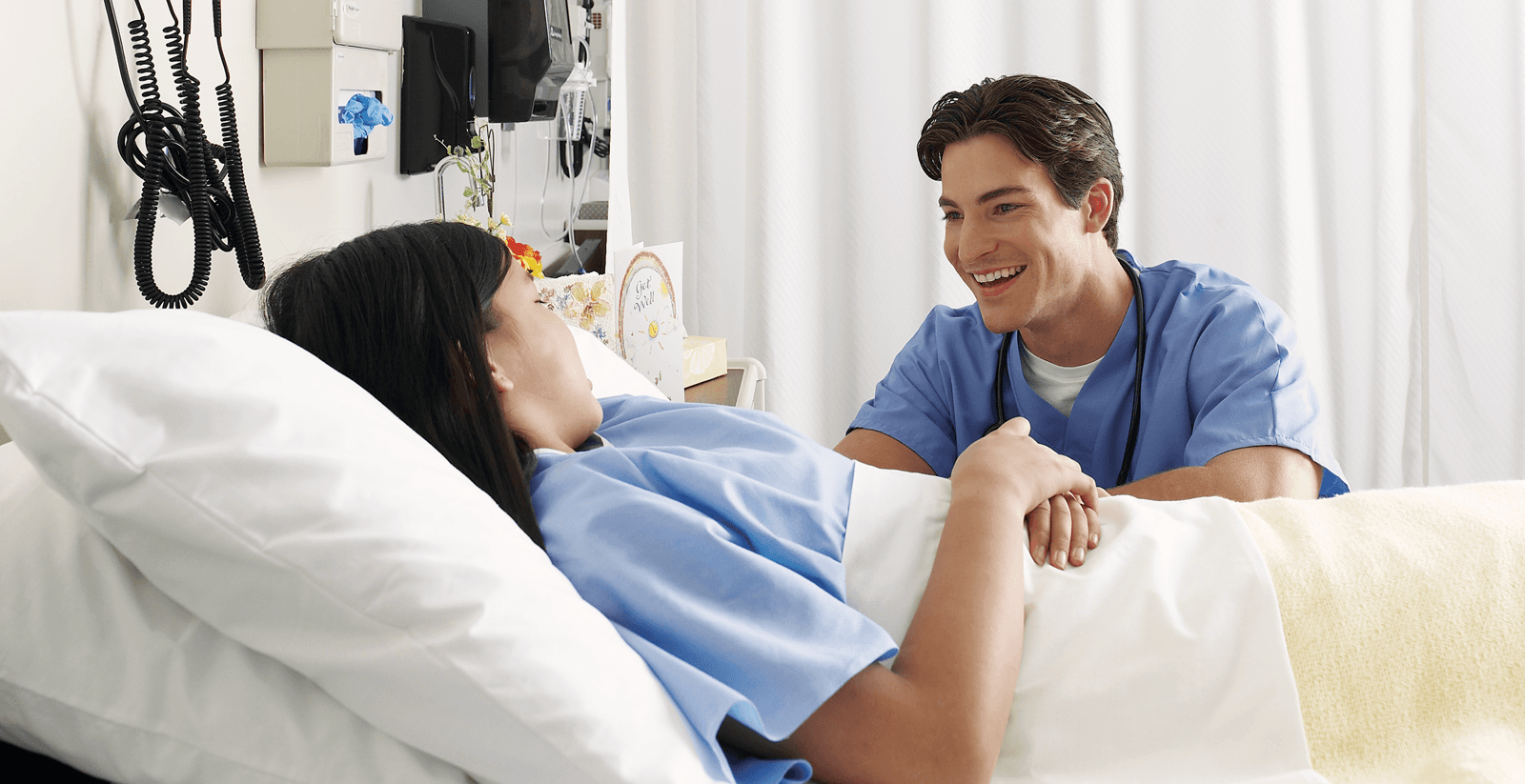Prevent Hospital Infections

Take Steps to Reduce Your Risk
According to the Centers for Disease Control and Prevention (CDC), 1 in 31 patients gets a healthcare-associated infection while staying at the hospital. Often, these happen because hospital procedures and equipment can expose internal parts of your body to germs. The chart below lists common infections and steps you can take to prevent them.
Clean Your Hands
Be sure to clean your hands after touching hospital objects or surfaces, after using the restroom, after coughing or sneezing, and before eating. Hospital staff members and visitors should clean their hands too.
Brush Your Teeth
Keeping your teeth and mouth clean can help prevent pneumonia, blood infections, and many other health problems. Ask us for a toothbrush, toothpaste, and mouthwash if needed. Brush teeth and rinse mouth twice a day, and see your dentist twice a year for regular check-ups.
Vaccines
Keep your vaccinations up-to-date. Check with your healthcare provider about getting a yearly flu vaccine and whether you need
a pneumococcal vaccine.
Catheter-Associated Urinary Tract Infection (UTI)
Germs enter your urinary tract through a tube used
to drain urine
- Fever
- Burning or pain in lower belly
- Bloody or frequent urination
- Clean hands before touching area
- Keep urine bag below level of bladder to prevent backflow, and ask for it to be emptied regularly
- Don’t pull, twist, or bend tube
- Secure catheter to your leg and ask every day if it’s still needed
Surgical Site Infection
Germs affect the site of your surgery—either on your skin or internally
- Redness
- Pain
- Drainage of cloudy fluid
- Fever
- Clean hands before touching area
- Do not shave surgery site yourself (irritation increases risk of infection)
- Don’t let visitors touch or dress your wound
- Ask your nurse to show you how to care for your wound
Central Line-Associated
Bloodstream Infection
Germs enter your bloodstream through a large tube that’s inserted in a vein near your neck, chest, or groin
- Red skin and soreness at site
- Fever
- Chills
- Clean hands before touching area
- Speak up if your bandage looks or feels loose, wet, or dirty, or if your skin looks red or feels sore
- Avoid touching tube or letting visitors touch tube
- Ask when tube can be removed
Ventilator-Associated Pneumonia
Germs enter your lungs through a tube in your mouth, nose, or neck used to help you breathe
- Cough with mucus
- Nausea and vomiting
- Fever and chills
- Chest pain
- Shortness of breath
- Clean hands before touching area
- Ask if it’s safe to raise the head of the bed
- Know the plan for cleaning the inside of your mouth and speak up if needed to stay on track
- Ask when tube can be removed
